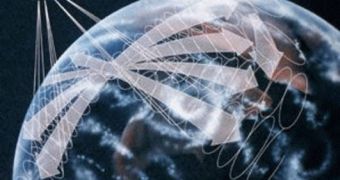The Clouds and the Earth's Radiant Energy System (CERES) observation system is one of NASA's ongoing projects that is related to understanding the role of clouds in the atmosphere and the energy cycle in a global climate change. The satellite is part of the agency's Earth Observing System (EOS), alongside other famous observatories, such as the Moderate Resolution Imaging Spectroradiometer (MODIS). For the construction of the new, high-precision instrument, NASA's Langley Research Center in Hampton, Virginia, has designated Redondo Beach, California-based Northrop Grumman as the main contractor.
The enterprise will be in charge with and responsible for the design, manufacture, assembly, test and calibration of the new CERES Flight Model 6 instrument, a press release on the American space agency's site announces. The collaboration has a value of up to $44.5 million over ten years of development, and the contract states that the work on the new satellite will take place at Northrop's Redondo Beach facility. It's not yet clear when the mission is scheduled for completion, but it will probably be sometime until CERES is completed and ready for launch.
The mission has four main objectives, NASA officials announce. The primary one is to continue the record of observations that the Earth Radiation Budget Experiment (ERBE) started, of measuring the record of radiative fluxes at the top of the atmosphere (TOA). This will significantly benefit the field of climate change analysis, officials hope. Secondly, the new satellite will have to double the accuracy of these readings, so that climatologists can detect minute changes in the radiative fluxes, and understand their role in the overall climate patterns.
Thirdly, it has to provide NASA and its mission controllers with the first ever long-term study of the way these fluxes interact in Earth's atmosphere. Finally, it has to match the flux readings it picks up between the planet's surface and the TOA to cloud properties, and thus link the two together, at last. This could allow further estimates of either the fluxes or the formation of cloud masses, based on the other one.
The new instrument, which is sponsored by NASA and the National Oceanic and Atmospheric Administration (NOAA), under the guidance of the inter-agency Integrated Program Office, will take off aboard a future National Polar-orbiting Operational Environmental Satellite System (NPOESS) C1 mission. This program is a multi-agency endeavor to further research of the Earth's polar regions, using highly sophisticated satellites, able to analyze the surface with cross-readings.

 14 DAY TRIAL //
14 DAY TRIAL //